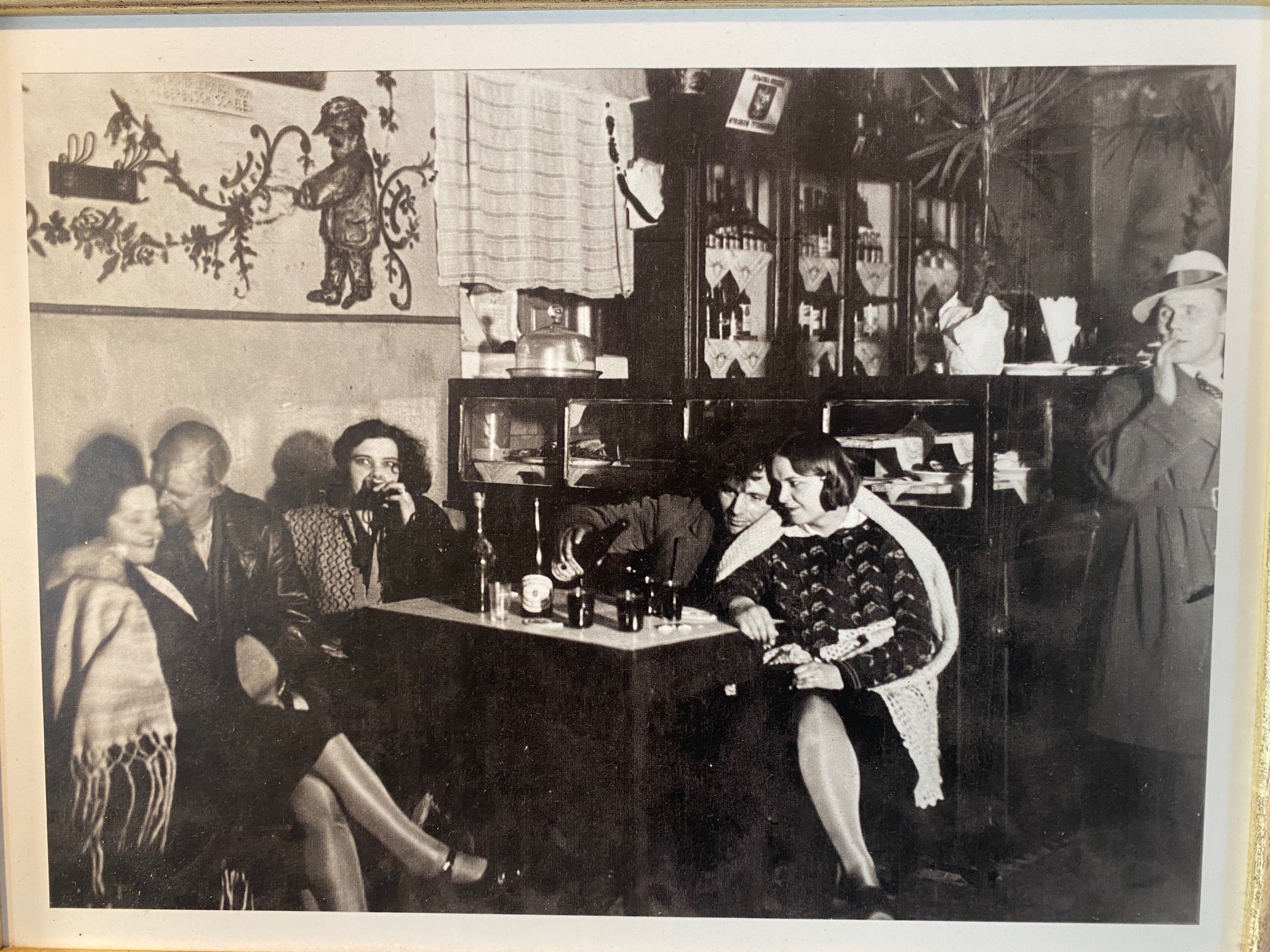In the vastness of space
and the vastness of the history of Warsaw,
I find myself absorbed
in a photograph of office workers
taking a break at a coffee house
sometime in the 1960s.
But why does this particular photo hang here?
What is it meant to tell us?
Is it a reminder that the coffee house
is a place for friends, colleagues, and laughter?
Or is it that the simple day-to-day pleasures
of work and coffee breaks
are what make a beautiful life?
I have always thought of coffee houses
as places for the secret discussions of
artists,
philosophers,
and revolutionaries.
Are these office workers in the photograph
making plans with their whispers?
At the moment the photo was taken,
a man at the table
is trying to kiss a woman
while the others watch them.
Is he a coworker proposing marriage
to another coworker?
Or someone just flirting?
Standing nearly offscreen
is a man wearing a fedora,
staring at the couple
with his fingers to his lips,
perhaps chewing a fingernail
or smoking a cigarette.
Is he involved with the group?
No, it doesn’t appear so.
He is just a stranger,
caught in the corner
of the photographer’s lens,
trapped in an image
that two generations later
would be hanging from a cafe wall.
The more closely I look at the photograph,
however, the more my narrative changes.
Not all of the workers are watching
the man try to kiss the woman.
Two are absorbed in evenly filling glasses
with a liquid from a bottle,
wine it looks like.
But there are only four glasses for five people.
Perhaps the man trying to kiss the woman
is an intruder, and not a coworker.
Or perhaps the woman is the intruder.
Yes, that’s it.
She is the intruder.
She is the one who does not belong.
She is the wife who has come
to check on her husband,
not to bring him a forgotten lunch,
but to ensure her husband is indeed
having coffee with his coworkers
and not sneaking away
for a tryst with a neighbour.
And yes,
he is trying to kiss her,
in order to reassure her.
A reason to celebrate with wine
during a coffee break from the office.
